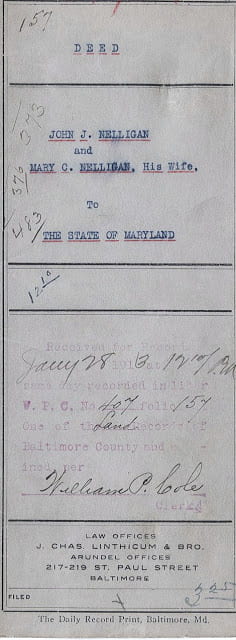“Sometimes in the course of events, circumstances so combine as to set at naught the wisest of preconceived plans,” writes Sarah Richmond, Principal of the Maryland State Normal School in the Annual Report of 1910-1911, and making the case for funding a new building for her students. “In the last twenty-five years school architecture has so improved in designs and methods of construction, that the model building of thirty or forty years ago is only tolerated now for want of means to tear it down and reconstruct another. Thirty-five years ago the one aim in public education was economy; classes were large and teachers were few, therefore few classrooms were needed. Today the individual counts for a great deal and fewer pupils are assigned to one teacher, necessitating a larger number of classrooms. So it soon happened that the number of classrooms in the normal school building were not sufficient to accommodate the larger number of classes.”
The “normal school building” was constructed for MSNS in 1876; a space with ten classrooms, a laboratory, library, gymnasium, assembly room, and various offices for staff. It had been spacious when first constructed and the school enrollment totaled 206 students.
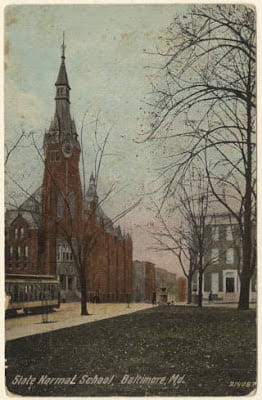
Lafayette and Carrollton Avenues
Over thirty years later, the school often enrolled twice that number and quarters were strained.
But Richmond didn’t want just a new building with a multitude of smaller classrooms — she wanted an entire campus:
“The friends of the school have long desired to see it located in a suburban district where enough land could be obtained to allow for the required school buildings including dormitories; a large campus; a garden of several acres, and ten or twelve additional acres to provide for future contingencies.”
Richmond had proven persuasive to the Maryland State General Assembly. In June of 1910, they created a Commission that would become the Maryland State Normal Building Commission. This body was charged with finding the site for a new school, selecting an architect and coordinating the budget for the new Normal School. Richmond served on the Commission while MSNS alum, Senator John Charles Linthicum served as President. Other notables were Governor Goldsborough, and M. Bates Stephens who was the State Superintendent of Education.
After two years of surveying prospective sites, the Commission recommended purchasing land in Towson, a rural community over eight miles from the current school.
The area surrounding Towson at that time was farmland. The houses that now cluster along either side of York Road were mostly built during the population and housing boom following World War II.
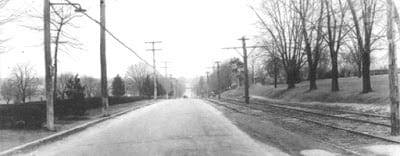
The streetcar line runs on the right side.
The parcel of land that would make up the almost 75-acres of the Maryland State Normal School at Towson campus was pieced together from acres of a number of different farms.
John J. Nelligan, a prominent banker with the Safe Deposit and Trust Company and owner of 22 acres of property, had acquired land from his neighbors: Abraham P. Nonemaker who ran a local roadhouse; Raymond P. Allen who was an architect; Arthur L. Bosley, member of a prominent local family and owner of an electrical supply company; Trustees and Executors for an estate inherited by Emily J. Offutt; and Trustees of the Sheppard & Enoch Pratt Hospital which had been in Towson since the late 1800s. In turn, Nelligan sold those parcels along with his own land and house to the State of Maryland for $83,735 — almost $1.9 million in today’s money.
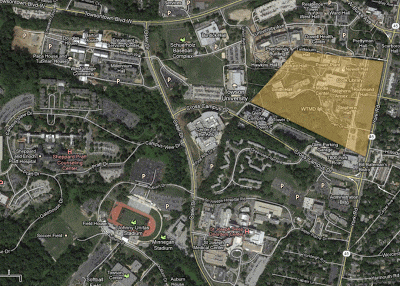
The Nonemaker parcel abutted the Nelligan property on the south side along York Road. It also contained a roadhouse called the Six-Mile House which provided food and lodging for farmers transporting their goods to Baltimore area markets via horse and wagon. The House had been in existence since before the mid-1800s, and many were sad to see it closed, even while the advent of the railroad and motorcar meant the public it served would not have much need for it in the future. During construction of the new school, it was used as office and storage space by the contractors building the school.
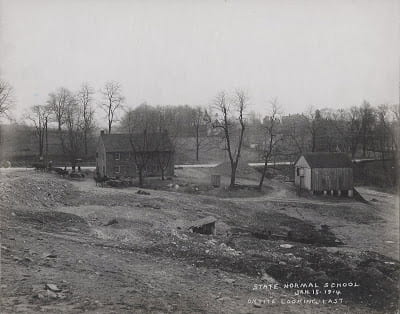
We surmise it stood about where 7800 York Road is today.
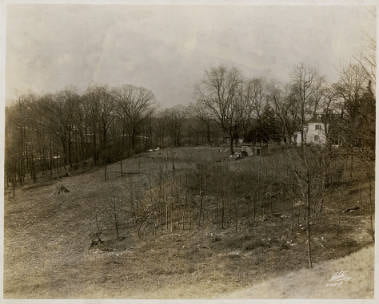
The Allen Cottage stands in the top left of the photo.
Other houses still remained on the property and would after the completion of the campus. The Allen house was known on campus as The Cottage and was originally built as the summer home for William B. Hill circa 1857. At that time it was known as Waveland. Richard Gittings, State’s Attorney for Baltimore County, owned the house from 1866 to 1882 when it was acquired by the McDonald family who later sold it and 24 acres to Raymond P. Allen in 1907.
The Cottage sat next to what would become the Glen on campus, and remained there, serving as housing for the campus caretakers, staff, and students, until it was razed in the 1960s to make way for Smith Hall.
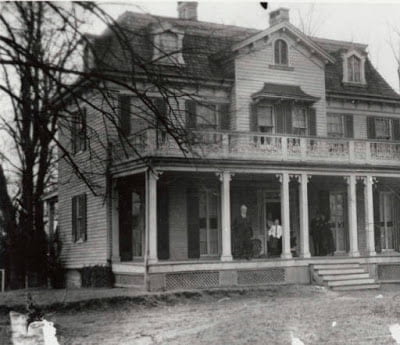
The Nelligan house was known as Glen Esk and had been built by Nelligan in 1905. At the time, the 3-story residence was considered very modern because it had central heating, indoor plumbing, running water, and electricity. It was also large with five rooms on the first floor, six bedrooms, and two baths on the second floor, and five rooms on the third floor. The third floor was originally built as a private chapel for the family.
By the State’s mandate, Sarah Richmond and her family took up residence in it as soon as the State took the property. It would house the schools principals and presidents until the 1970s. It currently holds the Counseling Center, but that’s scheduled to move out of it soon. Glen Esk’s future is currently unknown.
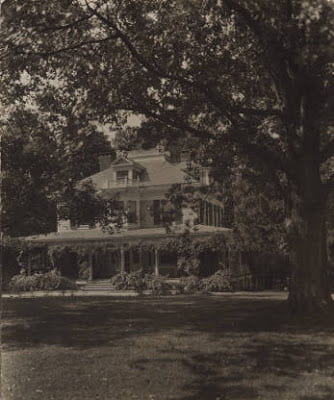
Behind Glen Esk stood a spring house — it is still standing today — as well as barns and other farm buildings, testaments to what the land had once been. When the school bought the land, it agreed to temporarily rent out a portion of the land to Bosley as a chicken farm. A farmhouse stood on the west side of campus and was later occupied by a farmer employed by the school. The farm helped keep costs low in the dining hall, supplying vegetables and meat when available. Pigs were kept to deal with food scraps on campus, and were then sold by the school for extra income.
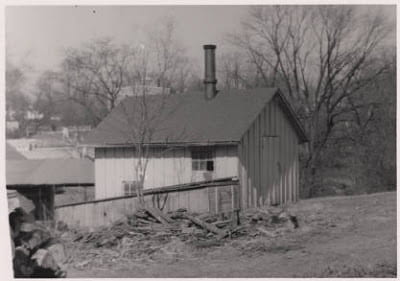
It became known as “Pig Sty Hill”.
One other structure stood on the property that made it appealing to the Building Committee: the Maryland and Pennsylvania Railroad, also known as the Ma and Pa Railroad. Its tracked ran along the western edge of the campus, near where the College of Liberal Arts stands today.
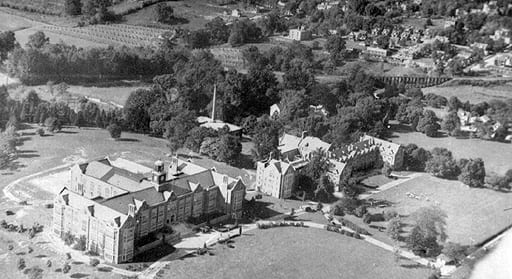
The Ma and Pa ran between York, Pennsylvania and Baltimore. The automobile was not yet an affordable mode of transportation, and while a streetcar ran along York Road, the train allowed students to come from further away in Maryland. MSNS taught students from every county in Maryland, sent to school for free in exchange for a promise to teach in state schools. Access to reliable transportation was a priority for the Building Commission.
While the Commission voted to acquire the Towson property in 1912, it did not have access to the $600,000 (almost $14 million in today’s dollars) bond until January of the following year.
